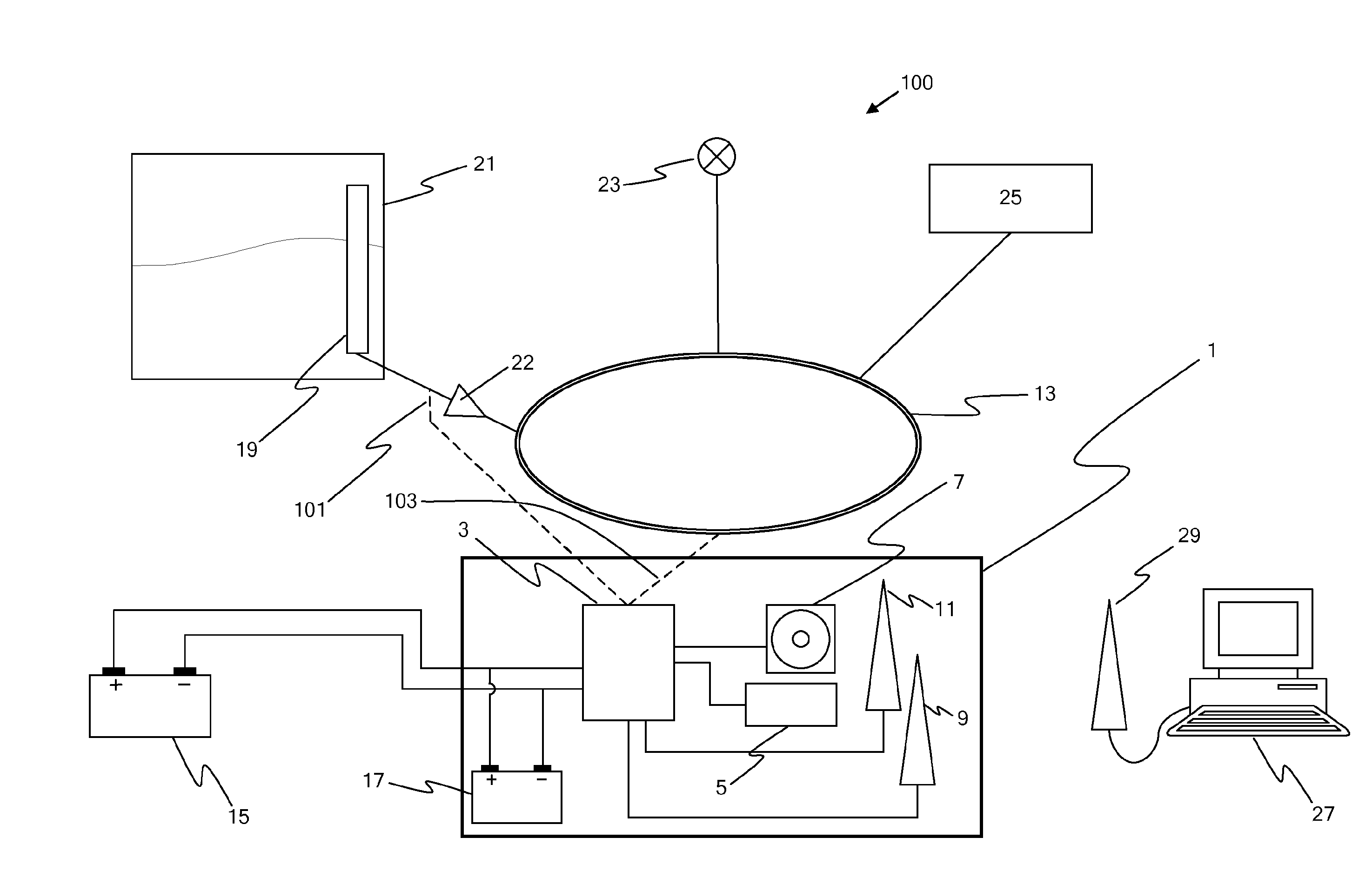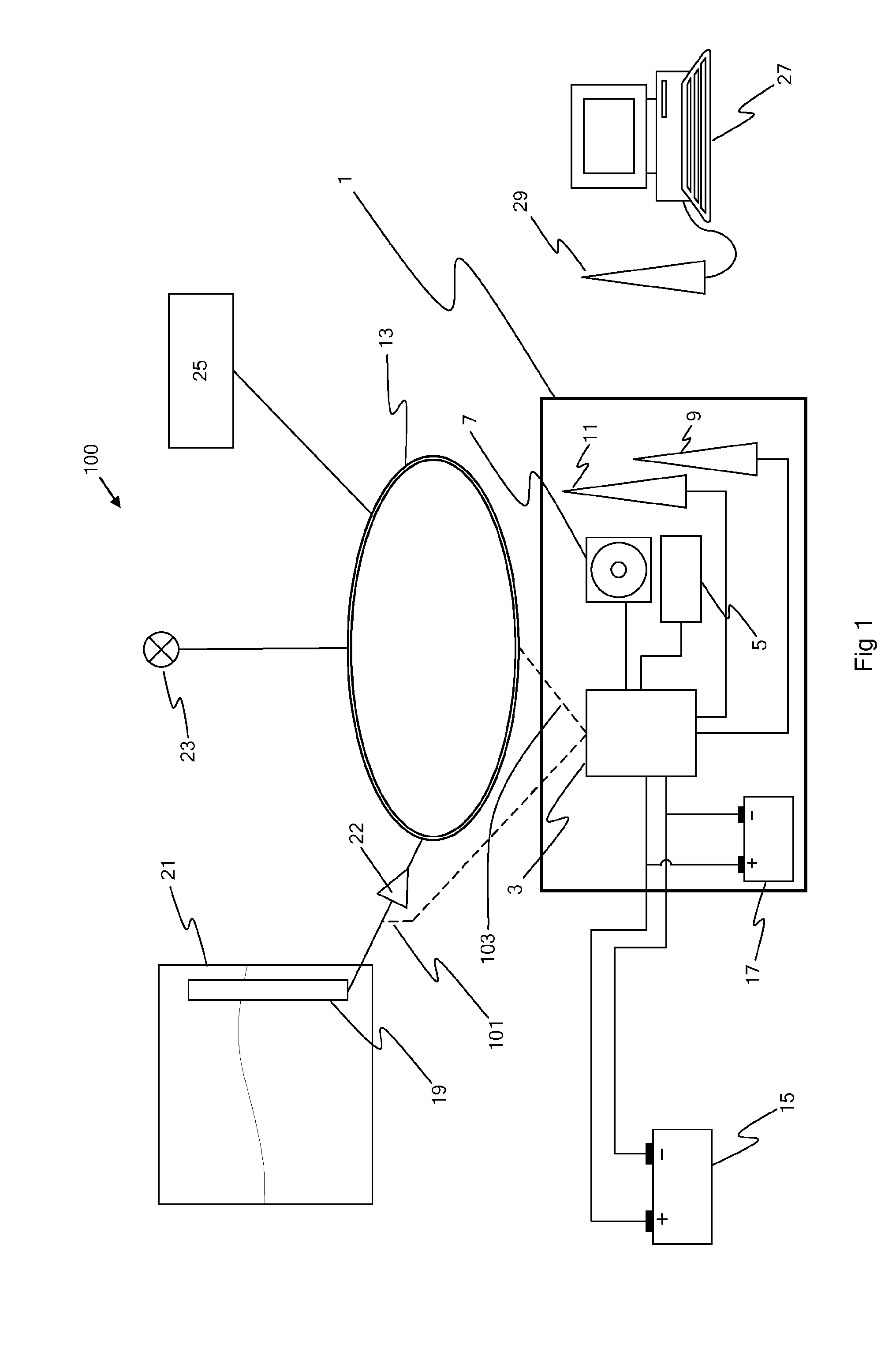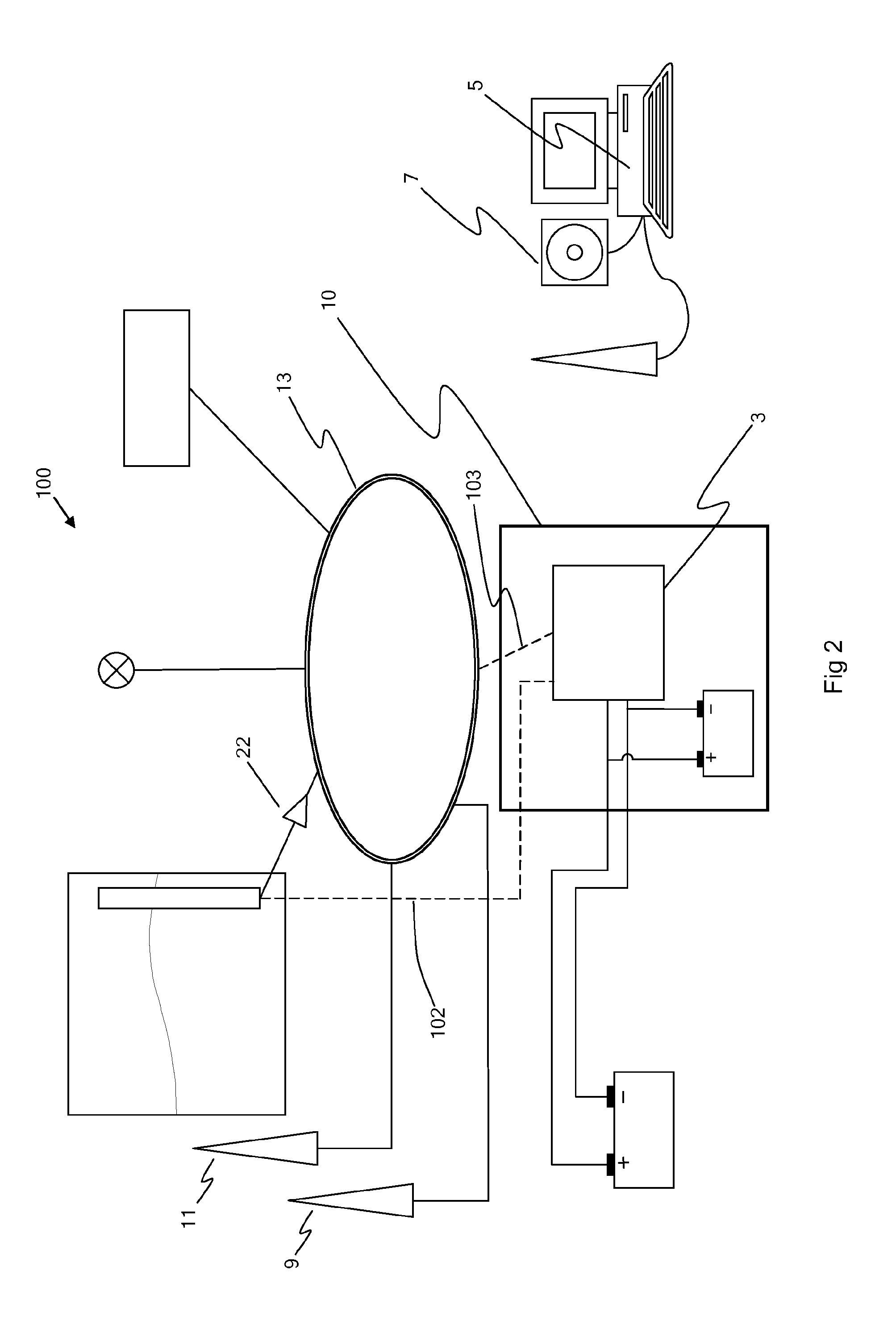Fuel monitoring apparatus and methods
- Summary
- Abstract
- Description
- Claims
- Application Information
AI Technical Summary
Benefits of technology
Problems solved by technology
Method used
Image
Examples
Embodiment Construction
[0102]FIG. 1 schematically depicts a fuel monitoring device 1, comprising a control module 3 connected to a processor 5, a flash memory device 7, a GPS receiver 9 and a GSM transceiver 11. The fuel monitoring device is suitable to be installed covertly within a vehicle (shown generally by the numeral 100) and connected to the vehicle's fuel tank sensor 19 within the vehicle's fuel tank 21, directly via connection 101 and 102, and to the vehicle's Controlled Area Network 13 (abbreviated to CAN or CAN-bus) by connection 103, via data processing device 22. The data processing device processes data received from the fuel tank sensor into a digital data format suitable to be transmitted across the CAN, and additionally calibrates the data received from the fuel tank sensor. In an alternative embodiment (not shown) the data processing device digitizes the data, relays the data across the CAN to an electronic control unit in communication with the CAN, and the data is calibrated and / or fur...
PUM
 Login to View More
Login to View More Abstract
Description
Claims
Application Information
 Login to View More
Login to View More - R&D
- Intellectual Property
- Life Sciences
- Materials
- Tech Scout
- Unparalleled Data Quality
- Higher Quality Content
- 60% Fewer Hallucinations
Browse by: Latest US Patents, China's latest patents, Technical Efficacy Thesaurus, Application Domain, Technology Topic, Popular Technical Reports.
© 2025 PatSnap. All rights reserved.Legal|Privacy policy|Modern Slavery Act Transparency Statement|Sitemap|About US| Contact US: help@patsnap.com



